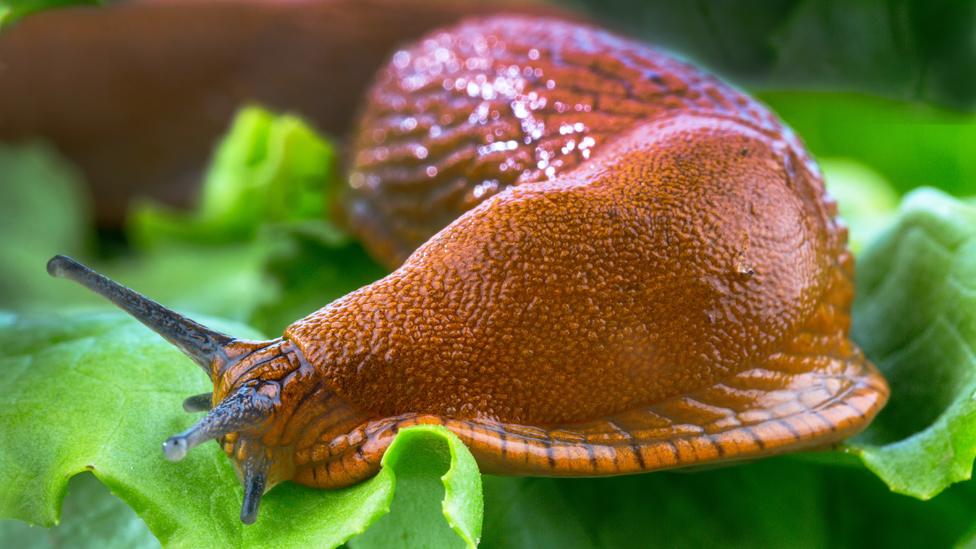Spanish slugs: Moscow alarm over giant invasive pests
- Published

Native slugs are dwarfed by the orange invader
Giant orange slugs up to 15cm (6in) long are causing alarm in central Moscow - the latest place they have turned up since spreading from Spain.
The Arion vulgaris slugs are monsters compared with most other slugs and are serious pests, capable of ravaging vegetable plots.
A species monitoring website, EU-backed DAISIE, lists the slug, external among the 100 worst invasive pests in Europe.
Russia's TV news programme Vesti , externalfound horrified reactions among Muscovites.
Monday's report quoted one local resident, Abdula Tashibekov, as saying: "They eat an awful lot, and it's really hard to get rid of them; I've battled against them, but they just keep multiplying".
Arion vulgaris is sometimes called Arion lusitanicus, or simply the Spanish slug. It can also be reddish-brown or yellow.
It is a hermaphrodite, meaning each slug carries both male and female sex cells, so it can mate with any Arion partner it finds, and that increases the risk of infestation. One slug can produce up to 400 eggs at a time.
Tristan Maclean, from the John Innes Centre in Norwich, explains how they differ from ordinary slugs
Not only is it a voracious plant-eater, it can also spread plant parasites and nematode worms, which can harm domestic pets.
Native to the Iberian Peninsula, the slug was first reported in France in 1956, and quickly spread north across Europe. Sales of plants across Europe are believed to have spread the slug's eggs widely.
It is common in the UK, and in recent years it has been found in parts of Russia, but now it has reached Tverskaya Street, barely a slime trail away from the Kremlin.
A Russian translator with the Twitter handle @NamShabOfEnki , externaltweeted: "Central Moscow, 15 minutes' walk from the Kremlin. A gigantic slug the size of a little kitten. It hid under the dishes, sheltering from the rain. The cats didn't mind, they were lying next to it. GIGANTIC!!!"
Allow X content?
This article contains content provided by X. We ask for your permission before anything is loaded, as they may be using cookies and other technologies. You may want to read X’s cookie policy, external and privacy policy, external before accepting. To view this content choose ‘accept and continue’.

The adult slugs usually die in autumn after reproduction, and they are unlikely to survive the fierce Russian winter, unless they find warm shelter.

Arion vulgaris - king among slugs
Inhabits most of Europe and parts of the United States
Eats green plants, decayed organic matter and animal carcasses - outcompetes native slug species
Hedgehogs, some birds and reptiles prey on it, though its heavy slime is reckoned to put many predators off
It is most active in damp weather and is very mobile for a slug, slithering at 5-9 metres per hour (16-30ft/h)
It can be stopped with slug fences, traps or boiling water.
- Published27 September 2018
